|
||||||||||||||||||||
| It is recommended to click the Refresh or Reload button each page to ensure current information. |
|
||||||||||||||||||||
| Building Vital and Faithful Worship All are welcome to come to the sessions you are able to fit into your schedule, and to join in the Cyberspace Discussion. |
|||
| COURSE OUTLINE Pt I | REVIEW OF "Beyond the Worship Wars" | ||
| COURSE OUTLINE Pt II | REVIEW OF "Eager for Worship" | ||
|
|||
| First five weeks will deal with Tom Long's book "Beyond the Worship Wars" Second five weeks will focus on Charlotte Caron's book "Eager for Worship" We want to come together to discuss and learn from each other ways to
continue building vital and faithful worship at St. David's. We will spend
some time dealing with the history and meaning of worship in the Christian
church. We will look at what is happening today in mainstream Canadian
congregations. We want to discuss the possibilities of creating 'a third
way of worshipping' beyond the stereotypes we have come to know as 'traditional'
and 'contemporary'. We want to take a closer look at the 'operative theologies'
of people who come for worship and struggle with ways of embracing diversity.
Finaly, we want to celebrate our differing worship preferences - seeing
them not as weaknesses, but as strengths. Using the model of mutual respect, come expecting to discover and clarify what you believe; in an environment where faithful expression, listening and honouring others' views will be emphasised. We will attempt an honest and creative learning dialogue in a climate of tolerance. |
|||
|
|
|||
| This course will provide an opportunity: 1. to consider the historic Christian understanding of worship and how it has evolved according to author Thomas G. Long. 2. to look at various forms of worship presently used in mainstream Christianity. 3. to explore an emerging 'third way' as described in "Beyond the Worship Wars". 4. to assess the present forms of worship at St. David's, coming to better understand and appreciate the various operative theologies used in United Church worship generally and St. David's specifically. 5. to celebrate our different worship preferences as strengths, not weaknesses. To help us with the second part of the course we will use the book "Eager for Worship" by Charlotte Caron. |
| "Suggested Characteristics of Vital and Faithful Worship, from Beyond
the Worship Wars, by Thomas Long" 1. Vital and faithful congregations make room, somewhere in worship, for the experience of mystery. 2. Vital and faithful congregations make planned and concerted efforts to show hospitality to the stranger. 3. Vital and faithful congregations have recovered and made visible the sense of drama inherent in Christian worship 4. Vital and faithful congregations emphasise congregational music that is both excellent and eclectic in style and genre 5. Vital and faithful congregations creatively adapt the space and environment of worship 6. Vital and faithful congregations have a stronger connection between worship and local mission and this is expressed in every aspect of the worship service. 7. Vital and faithful congregations have a relatively stable order of service and a significant repertoire of worship elements and responses that the congregation knows by heart. 8. Vital and faithful congregations move to a joyous festival experience toward the end of their worship services. 9. Vital and faithful congregations all have strong, charismatic pastors and worship leaders. |
|
|||||||||||||||||||||||||||||||||||||
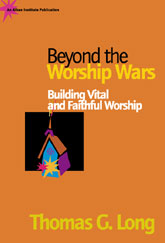 BEYOND THE WORSHIP WARS: Building Vital and Faithful Worship BEYOND THE WORSHIP WARS: Building Vital and Faithful Worshipby Thomas G. Long. The Alban Institute: Bethesda, MD. 2001. 119 pages. $16.00 US. Papercover. ISBN #1-56699-240-0. Reviewed by: Wayne A. Holst Worship in Canadian and American churches is currently enduring a profound period of ferment, writes Thomas Long, professor of preaching at Candler School of Theology in Atlanta. 'Worship wars' are being fought in many of our congregations. Frequently the lines are drawn between those who want to honour and enhance the traditions of the past and those who believe that new and contemporary forms are the only hope for the church's future. The first force on the worship scene today reflects a 'recovery movement' of the traditional; an exhilarating rediscovery of the worship treasures belonging to the whole church. The official worship books of many denominations are shaped by this force. Many clergy today have been trained in this mode and have come to love and respect it. Across a broad Protestant denominational spectrum pastors attempt to link word and sacrament, the value of the church's lectionary, the power of gestures such as baptismal anointing with oil, the beauty of chanting the psalms, the rich tapestry of time-tested language and the jewels found in the great hymns of the church. Concurrently, a second worship force has been rising in our churches. Just as the old established denominations were rediscovering their rich common heritage, the culture seemed to be busily and thoroughly rejecting traditional worship. A few visionary leaders began to theorize that people were leaving churches not because they rejected spirituality but because they were tired of the typical 'churchy' kind of spirituality. The world has changed, they claim. Many people no longer see themselves as churchy folk trying to choose between two oldline denominational congregations. They are, rather, 'seekers' or religious free agents, unbound by conventional loyalties and deeply involved in searching for spiritual experience in very personal, immediate, often unconventional and practical ways. Actually, most congregations do not find themselves in either camp. The majority of churches are somewhere in the mixed and muddled middle, trying to sort out what their conflicts over worship mean. In other words, the traditional and the contemporary are both at work and often at odds simultaneously in most congregations. Long believes that both traditional and contemporary, for all they have to teach us, are finally not up to the challenges of the day. Seeker services are often a 'shallow pool' he says, and getting people to move from seeker to believer is more difficult than originally thought. Traditional worship, on the other hand, is frequently quite boring and has not taken sufficient account of the fact that we are in a new and challenging cultural environment and worship must always be ready to adapt. The author wants to avoid the hardened battle lines between old and new. He has made a study of what he calls 'third way' congregations who remain firmly within the trajectory of historic Christian worship and yet have fashioned it in a manner that is genuinely responsive to the present cultural environment. There is a path through the worship wars, say Long. A means of combining the best features and healthiest impulses of the combatants. These 'third way' congregations, while not attempting to 'blend' aspects of both renewal currents have been attempting to create a new thing in the earth - a service of worship completely attuned to the cultural environment but also fully congruent with the great worship tradition of the Christian church. From a study of twenty avant guard congregations representing the mainline spectrum, Long attempts to define a coherent picture which embodies nine key characteristics of worship. They allow for mystery, show hospitality, make drama visible, emphasise excellent and eclectic music, adapt space and environment, forge a connection between worship and local mission, maintain a stable order and a significant repertoire of worship elements and move to a joyous festival experience with charismatic pastors as their leaders. The greater part of the book attempts to substantiate each of these characteristics. Pastoral leadership, says the author, is key to worship renewal. Congregational conflict is inevitable as people navigate the process. Significant lay involvement is necessary in the change process. Education and publicity help to facilitate the way. This book is a major contribution to the charting of a new course. But there are some drawbacks. Because his focus is on 'envisioning a third way' the author does not present much background to either the traditional liturgical renewal or to the values of seeker oriented worship. That is a distinct limitation because he fails to provide persons hailing from either camp, and wanting to forge ahead, with much help to really understand the values inherent in their opposite. Secondly, the author makes a claim but does not adequately clarify how this new 'third way' is really not a blending of traditional and modern worship since he says it is not. Where the book succeeds is to offer people who are tired of the worship wars an opportunity to think new and think together in a constructive and hopeful way. That is Long's special contribution. It will be welcomed in many congregations eagre to move beyond impasse. _______________ Reviewer's Bio: Rev. Dr. Wayne A. Holst is a writer who teaches religion and culture at the University of Calgary. |
|||||||||||||||||||||||||||||||||||||
| Bio of Thomas Long Bandy Professor of Preaching at Candler School of Theology, Emory University, has been an ordained Presbyterian pastor since 1971. In addition to his previous teaching positions at Princeton Theological Seminary, Columbia Theological Seminary and Erskine Theological Seminary, he also served as director of Geneva Press, a division of the Presbyterian Publishing Corporation. A sought-after speaker, writer and homiletician, he is the author or editor of more than a dozen books, including 'Preaching and the Literary Forms of the Bible' (1989) 'The Witness of Preaching' (1989) 'Hebrews' (1997) in the 'Interpreter's Commentary Series' and 'Matthew' (1997) in the Westminster Bible Companion series. He and his wife Kimberley live in Atlanta. Georgia. |
|||||||||||||||||||||||||||||||||||||
| "EAGER FOR WORSHIP: Theologies, Practices and Perspectives on Worship in the United Church of Canada" The McGeachy Papers VII, United Church of Canada, Division of Ministry Personnel and Education: Toronto, ON. 2000. 248 pages. Papercover. $ 21.95 Cdn. ISBN #0-88622-371-7. Books partially provided thanks to a grant from St. David's Foundation. Reviewed Reviewed by: Wayne A. Holst for St. Davids United Church, Calgary, Website. April 9th, 2002. |
|||||||||||||||||||||||||||||||||||||
| Eager for Worship is a collection of papers and presentations which emerged
from a special study conducted by Charlotte Caron, a teacher of worship
and homiletics at St. Andrews/St. Stephens College at the University of Saskatchewan in Saskatoon. Caron has co-chaired the national pastoral relations committee and has helped set personnel policy for the United Church of Canada (UCC). She has experience working in all other expressions of church life from local congregation to presbytery and conference. The authors purpose is to articulate understandings of worship present and operative in the UCC and how these are expressed in actual worship situations across the church. She invites the reader to consider the place of worship in the sustenance of faith communities and is intentional about the centrality of worship in the churchs life. Because this book is an assortment of articles without a solid editorial concept guiding the appearance and development of the material, the reader may initially grow confused over its content. General themes are evident, such as the major elements and roles of worship, the sacraments and preaching, the place of the bible, prayer, music, symbols, special services and other rites. However, these are presented without much thought given to style or flow of the material. When reading or teaching from this book, therefore, it is imperative that the instructor or student be willing to follow a theme through various chapters rather than expecting to find in one chapter all the material on a particular subject. Here are four key descriptives of Eager for Worship. It is practical, not poetic. Much good experience and resource material is contained here, but it is presented in a somewhat pedantic fashion. The impression given is that the content is intended for a rather limited, somewhat specialized audience and not a general church readership. It is descriptive, not prescriptive. The author goes to great lengths to address fairly a broad cross section of the churchs working theologies and practices. No attempt is made to proffer a value judgment about them. For those wanting to locate an extensive, mature overview of United Church worship, this book is helpful. If one is seeking guidance as to what theories and practices may be best for a particular situation - that challenge is left to the reader. It is grounded in United Church of Canada experience. The author is obviously well versed in her subject and writes with an economy of words. This is useful for those who want to know what is currently and actually taking place, worship wise. Little is provided, however, by way of guiding paradigms for the future evolution of this churchs worship. It is open to the influence of the ecumenical church. Because the United Church of Canada, founded in 1925, was from its beginnings a merger of three separate denominations and became a unique denomination in the Christ ianfamily, this church has always been open to ecumenical influence - locally, regionally, nationally and internationally. From its beginnings this church has contributed to and benefited from a rich ecumenical life. Those seeking orthodox and proper liturgical directives will search here in vain. Those, however, wishing to enhance their understanding of the varieties and foundational belief systems underlying worship life in this hybrid and distinct Christian community, Eager for Worship provides a helpful resource and the author is to be commended for her contribution. ________ Reviewers Bio: Wayne A. Holst is a writer who has taught religion and culture at the University of Calgary |
|||||||||||||||||||||||||||||||||||||
|
Group Leader. Wayne Holst |
|||||||||||||||||||||||||||||||||||||
| Group Leader. Catherine Pace Catherine Pace was born and brought up in the United Church of Canada. She spent the first 22 years of her life in Nova Scotia receiving her education before moving to Toronto to finish her theological training. The first 22 years within the United Church of Canada's paid accountable ministry were spent in various pastoral charges and the Conference Office in Saskatchewan. The last three years have been spent in Alberta. Catherine brings to this course, her love of the church and her love for the people of the church. She believes in the value of the United Church being the church it is and loves to introduce people to the church which has held her heart and faith for many years. She finds the church a joy, a struggle, a challenge and a faithbuilding place to be, Catherine brings her prairie, feminist, open, changing faith to this course and invites all into conversation. |
|||||||||||||||||||||||||||||||||||||
| REFERENCE SITES These internet sites are worth visiting for further materials on the course study. | |||
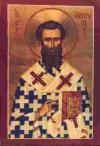 |
EXCERPT: A disciple of the Apostle St. John the Theologian was the holy Martyr Polycarp,
whose disciple was St. Irenaeus of Lyons (140-202 A.D.); in turn, a disciple
of St. Irenaeus was St. Hippolytus, born in 170 A.D. He grew to maturity
in Rome, where he was ordained a priest by the then Bishop of that city,
Pope Victor, and developed into a man of profound spirituality, strict
morals, and Orthodox doctrine--exactly the qualities most needed by the
Christians of Rome during what was for them a time of laxity in morals
and a time when strange new teachings, not of Christ, were being introduced
to the faithful. Click on the picture for the larger part from the "Orthodox America" Site. |
||
|
Is Willow Creek the Way of the Future? by David S. Leucke |
 An excerpt from Christian Century article."Will technique assure that the right people show up when needed?
Techniques and methods can increase the chances, but the specifics depend
much more on God’s providence. We can celebrate those churches where everything
comes together, but imitating their approach offers no assurance of a second
success, because the mix of people and circumstances will be different.
Churches grow where a lot of people are excited about what they are doing
and are doing it well." Willow Creek is the first of the "Megachurches".
Click on the lady's smile to visit their own website. An excerpt from Christian Century article."Will technique assure that the right people show up when needed?
Techniques and methods can increase the chances, but the specifics depend
much more on God’s providence. We can celebrate those churches where everything
comes together, but imitating their approach offers no assurance of a second
success, because the mix of people and circumstances will be different.
Churches grow where a lot of people are excited about what they are doing
and are doing it well." Willow Creek is the first of the "Megachurches".
Click on the lady's smile to visit their own website. |
||
 National Center for Pastoral Leadership (Catholic) |
The Willow Creek worship service is a culturally relevant, uplifting service
comprised of repetitive emotional music and an inspiring message. It draws
thousands of people each week, hopefully prompting them to deepen their
relationship with Jesus. It contains none of the ritual, symbols, and prayers
of the Catholic Church, nor is it imbedded in salvation history or a community
larger than itself.Despite the differences between this obviously evangelical worship service
and a Catholic Eucharist, however, Willow Creek offers many challenges
and lessons for those willing to open their eyes and hearts. This is especially
true in the areas of adapting to the culture, examining both sung and spoken
word, developing intimate connections in a mega-church environment, and
meeting the need for uplifting spiritual experiences. I believe openness
to these lessons is not only called for but vital as we continue toward
the new millennium. From a paper on the Willow Creek Church and Catholicism by Amy Florian. Click HERE for the whole. |
||
| Exploring Primitive Christianity ed. Robert Nguyen Cramer |
A review of the etymology and background of worship from Harper's Bible
Dictionary, The Theological Dictionary of the New Testament Vol 6, A Theological
Word Book of the Bible and some other links. AN EXCERPT: "We saw that in the OT a tension developed between the spiritual and ritualistic aspects of worship, the prophets being the exponents of the former, and the Temple priests of the latter. Jesus adopts the prophetic conception of worship, and gives the inward spiritual element absolute primacy. He does not so much attack ceremonial worship as simply ignore it." |
||
 |
The worship resources page of the United Church of Canada main website. | ||
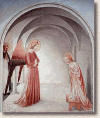 |
Here is a worthy site. It is the web page of Southern Wesleyan University
professor, Barbara Bross and the courses she teaches. One is "Christian
Worship" which is team taught with religion professor, Robert Black
of the SWU faculty. Her headings are: magazines, arts in worship, denominational links, christian symbols, worship leadership education, articles on worship subjects, on-line articles, worship bibliographies, and children's worship. |
||
 |
From International Worship and Arts Network, a rather diverse selection of 60 Books Reviewed on Worship. This site is worth visiting for the insight into the evangelical perspective. | ||
 |
An interdenominational site "promoting discussion about liturgy and mission." Our audience comprises clergy, church musicians, worship committees and others involved in thinking about and working on the connection between worship and the Christian faith in the new millenium. | ||
 |
From Australia, a cross-denominational collection of Music, Drama, Poetry, Art, Liturgy and Prayer links. | ||
 |
Lift up Your Hearts - the Worship & Spirituality Site of the Evangelical Lutheran Church in Canada. An excellent resource. | ||
| Quite a large resource of "Contemporary" Music |  |
||
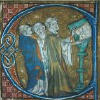 |
Oremus Hymnal ( member of Anglican Church Music Ring) is a resource data base of traditional hymns, searchable by first line, tune, season etc. It also has MIDI for most hymns. | ||
 |
Charles Wesley - cofounder of Methodism and prolific hymnwriter. His hymns and tunes - some transcribed to MIDI. | ||
 |
Stories behind 200 favourite hyms prepared by Bible Communications, Inc. | ||
Lutheran Hymnody: Orthodoxy in Song “Lutheran Worship: Why We Do What We Do” A paper covering 2000 years of singing. by Pr. Chad L. Bird (St. Paul, Wellston, OK)Texas Confessional Lutherans Free Conference 5 August 2000 |
|||
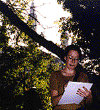 |
"The World Wide Web - an instance of Walter Ong's Secondary Orality?"
The MA Disertation at Goldsmith's College of Kathrine Kveim Click on her picture for the full dissertation (and
her other work). An excerpt:
|
||
 |
RESTLESS GODS: The Renaissance of Religion in Canada by Reginald W. Bibby, For more than a quarter century Reginald Bibby, a sociologist at the University of Lethbridge, has been surveying Canadians about life as they are living it. Since 1975, his assessments have been carried out, with growing refinement, every five years or so. He has carefully monitored our social trends generally and our religious trends, specifically. ... What Bibby heralds is nothing short of a religious and spiritual renaissance in Canada. Something is indeed stirring within the nations long established Christian communities, both Catholic and Protestant. Sometimes this is taking place internally but often it is happening beyond the churches. The gods are extremely restless, says Bibby and so are peoples souls (4). |
||
|